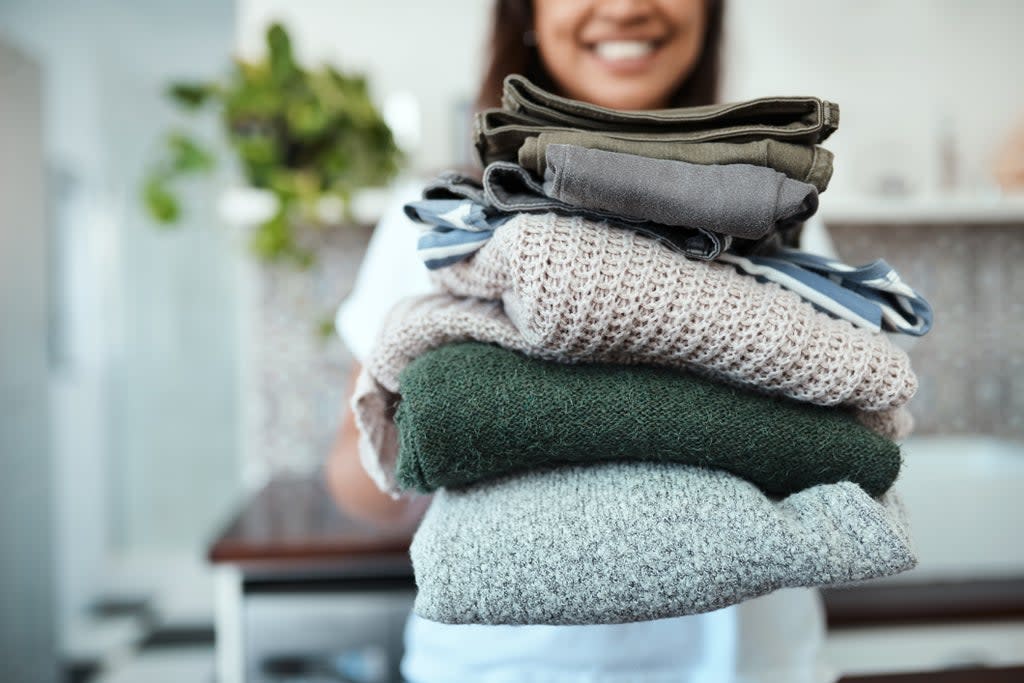Surge in second-hand sees eBay save 87 million items from landfill

Sales on eBay in 2021 have saved almost 87 million - or 18,000 tonnes of - items from landfill thanks to a surge in second-hand sales.
A growing awareness of sustainable shopping, plus time spent during the pandemic sorting and selling surplus possessions, has contributed to an increase in second-hand sales of 29 per cent this year compared to 2018.
As well as pre-loved fashion, which constitutes almost a quarter of sales, one second-hand tech item has been bought every two seconds in 2021 so far, reflecting the recent shift to home-working.
Now, as part of Oxfam’s Second Hand September campaign - which encourages the nation to buy and sell only second-hand for 30 days or more to minimise the volume of clothing going to landfill - eBay has pledged to match all donations sold for Oxfam on the marketplace £1 for £1, in a bid to reduce the 336,000 tonnes of clothing sent to landfill in the UK every year.
When selling through the auction platform, users have the option to ‘sell for charity’, and donate between 10 and 100 per cent of an item’s proceeds, with money raised going towards Oxfam’s work beating poverty around the world.
Emma Grant, head of Preloved at eBay UK said: “It’s fantastic to see conscious shopping getting more mainstream and sustainable purchasing habits stretching beyond the pandemic, proving that pre-loved is more than just a trend.”
The popularity of loungewear since the start of the pandemic is also reflected in a 200 per cent increase in searches for Juicy Couture tracksuits.
Elsewhere, the top five brands to buy and sell secondhand on eBay in 2021 are Next, Nike, M&S, Adidas and Zara.
Lorna Fallon at Oxfam said: “We’re excited to be partnering with eBay to encourage people to buy and sell second-hand clothing, and raise as much money as possible for our work fighting poverty around the world. Buying second-hand helps to reduce the impact of clothing on the environment by giving garments a new lease of life.”
By 2050 it is anticipated the fashion industry will use up 25 per cent of the world’s carbon budget, making it one of the most polluting industries, second only to oil.
Fabrics with the worst environmental impact include cotton, synthetics and animal-derived materials.
According to Fashion For Good, conventional cotton production accounts for one sixth of all pesticides used globally, impacting farmers and local communities with harmful chemicals.
Synthetic materials, such as nylon, polyester and acrylic are usually produced using oil, while materials such as leather are responsible for huge methane outputs.
Extinction Rebellion argues that the fashion industry needs to stop using virgin resources to create new materials and instead “use and repurpose what we already have”, with more sustainable fabrics including recycled, man-made cellulose (plant-based fabrics, such as Tencel), and bast fibres (sourced from plants, such as jute and hemp).
Read More
Welcome to Bornholm, the Danish island where sustainability comes as standard
Why The Independent is putting sustainability front and centre in our travel coverage
Tents left behind at Reading Festival spark environmental concerns
Food waste is rising as lockdown eases and we eat out more, survey says
How to buy less but eat more: From banana skin recipes to grow your own vegetables
Prince Harry criticised after flying in private jet after charity polo match


